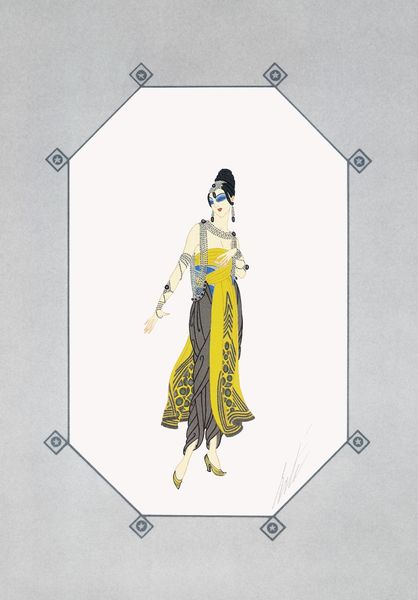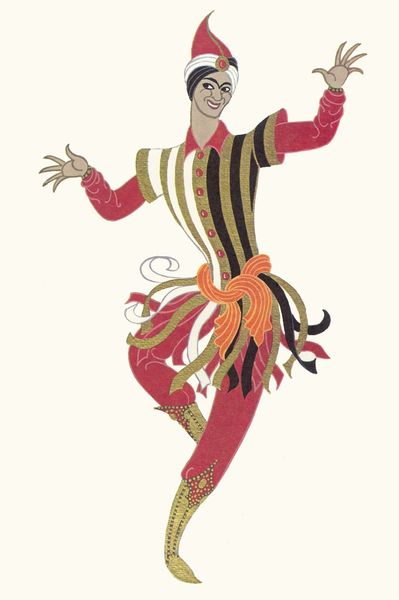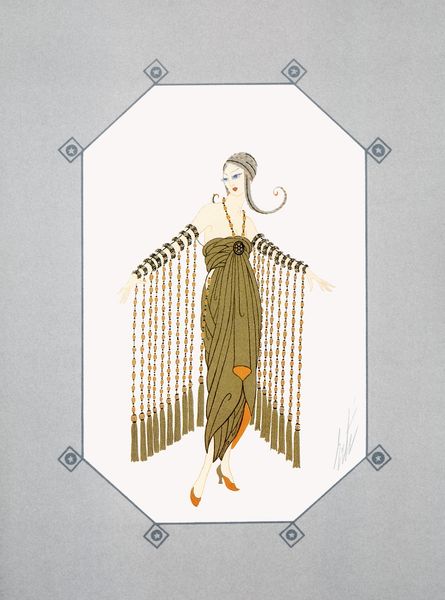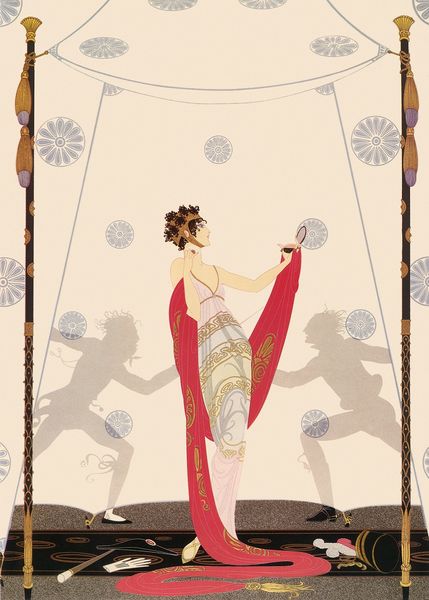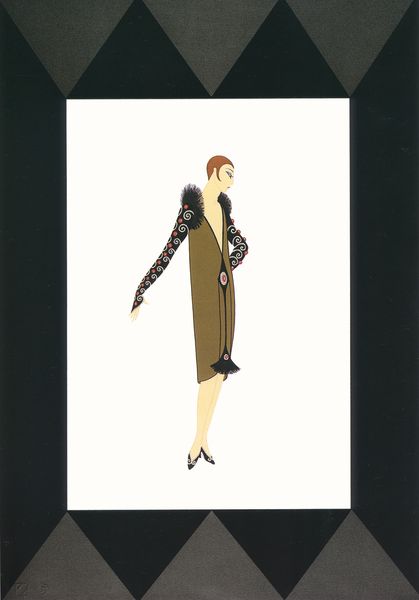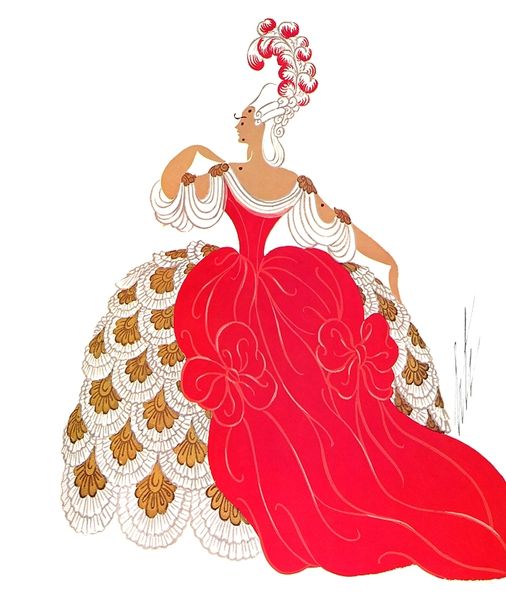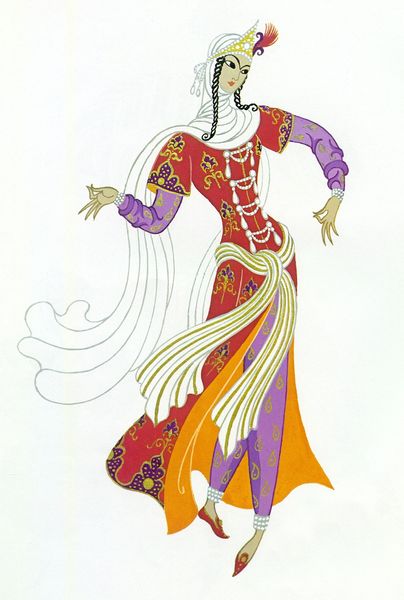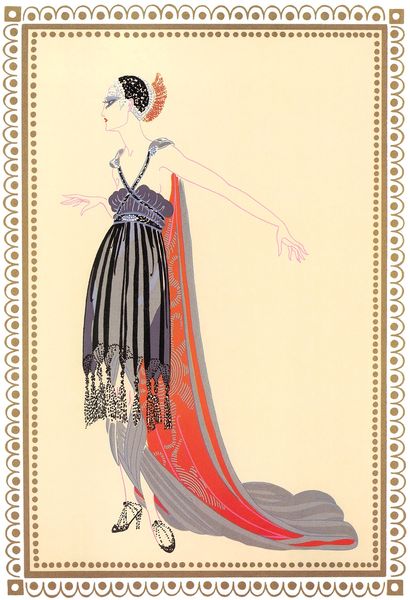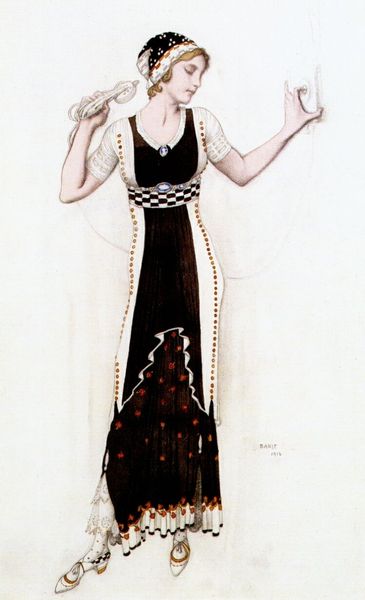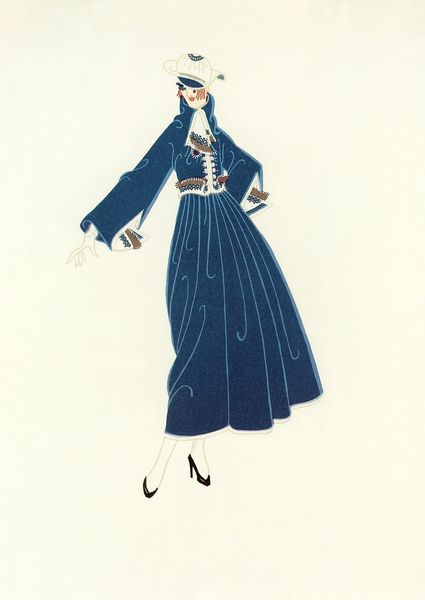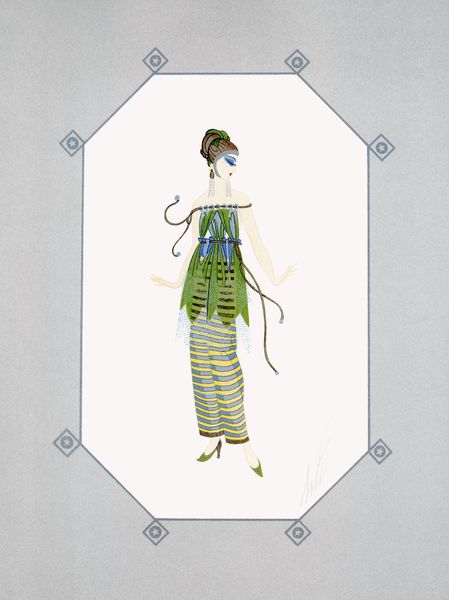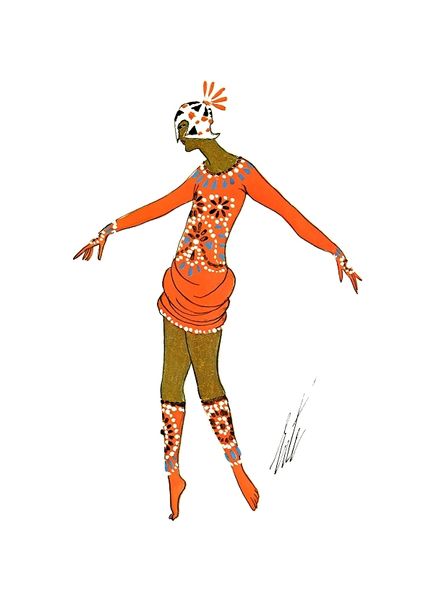
drawing, print, ink
#
portrait
#
fashion design
#
art-deco
#
drawing
# print
#
fashion mockup
#
festivity and dance
#
fashion and textile design
#
figuration
#
flat colour
#
ink
#
fashion styking and communication
#
sketch
#
clothing theme
#
cultural celebration
#
costume
#
symbolism
#
multicultural outfit
#
clothing design
Copyright: Erte,Fair Use
Editor: Here we have Erte's "Project for The Masks," a drawing likely from the Art Deco period rendered in ink and print. There’s something really striking about the theatricality of this costume design – the bold shapes and colors create such a visually exciting, almost overwhelming, effect. How do you interpret this work? Curator: Well, given the artist’s context and my own materialist lens, I immediately think about the means of production implied here. Erte wasn't just making "high art"; he was creating designs intended for mass consumption through fashion and theater. Consider the printmaking aspect - it speaks to reproducibility, dissemination. It makes me wonder about the conditions of the labor involved in realizing designs like these. Editor: That's a great point. It’s easy to get lost in the glamour of the design without thinking about the hands that would have crafted it. The print suggests multiples, making the design available but also changing its aura. Curator: Exactly. And the ink itself – where did it come from? What processes were involved in its creation? These raw materials are critical in understanding Erte’s practice as an endeavor deeply entrenched with commercialism. The materials shape the message just as much as the form does. The sketch itself has very controlled, visible linework. It would later guide the manufacturers producing his design. This isn’t the ‘original’ in a fine arts sense. Editor: So, thinking about the social context and the labor involved really shifts our understanding from appreciating pure aesthetics to examining the industrial side of art. Curator: Precisely. The focus becomes the transformation of raw materials into cultural commodities and, of course, all the social relations enmeshed within those systems. We need to consider those networks in the artwork's meanings. Editor: I never considered that Erte’s work was part of a wider production. Thinking about materiality definitely enriches my view on the artwork, that it's just the design and not about its means of manufacture, so thank you for expanding my horizons! Curator: You’re most welcome. It's all about unveiling the layers of labor and consumption embedded within even the most seemingly decorative pieces.
Comments
No comments
Be the first to comment and join the conversation on the ultimate creative platform.
